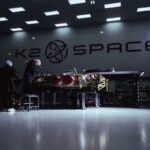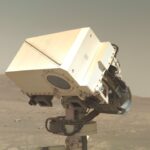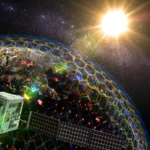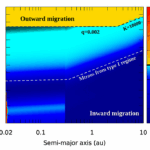An international team has made a significant breakthrough in understanding the tectonic evolution of terrestrial planets. Using advanced numerical models, the team systematically classified for the first time six distinct
phys.org6- Page
There’s always a touch of melancholy when a chapter that has absorbed years of work comes to an end. In the case of the Atacama Cosmology Telescope (ACT), those years
I have to confess, despite spending years gazing at the night sky, telescope at the ready, tracking planets and hunting for deep sky objects, I only actually saw the Man
As this month’s string of powerful X-class solar flares sparked brilliant auroras that lit up skies across an unusually wide swath of the globe—from northern Europe to Florida—researchers at NJIT’s
A vast region of our solar system, called the Kuiper belt, stretches from the orbit of Neptune out to 50 or so astronomical units (AU), where an AU is the
Ancient Mars boasted abundant water, but the cold and dry conditions of today make liquid water on the Red Planet seem far less probable. However, the Mars Advanced Radar for
Satellite mega-constellations are quickly becoming the backbone of a number of industries. Cellular communication, GPS, weather monitoring and more are now, at least in part, reliant on the networks of
NASA’s Europa Clipper captured this image of a starfield—and the planet Uranus—on Nov. 5, 2025, while experimenting with one of its two stellar reference units. These star-tracking cameras are used
Blue Origin’s New Glenn rocket is powerful, but Jeff Bezos’ rocket company wants more.
The European Space Agency’s Euclid mission—designed to map the geometry of the dark universe with unprecedented precision—continues to deliver its first scientific insights. The Euclid Consortium has published a fresh
-
 012024 in Review: Highlights from NASA in Silicon Valley
012024 in Review: Highlights from NASA in Silicon Valley -
 02Panasonic Leica Summilux DG 15mm f/1.7 ASPH review
02Panasonic Leica Summilux DG 15mm f/1.7 ASPH review -
 03How New NASA, India Earth Satellite NISAR Will See Earth
03How New NASA, India Earth Satellite NISAR Will See Earth -
 04From Polymerization-Enabled Folding and Assembly to Chemical Evolution: Key Processes for Emergence of Functional Polymers in the Origin of Life
04From Polymerization-Enabled Folding and Assembly to Chemical Evolution: Key Processes for Emergence of Functional Polymers in the Origin of Life -
 05And Thus Begins A New Year For Life On Earth
05And Thus Begins A New Year For Life On Earth -
 06Astronomy Activation Ambassadors: A New Era
06Astronomy Activation Ambassadors: A New Era -
07SpaceX launch surge helps set new global launch record in 2024





